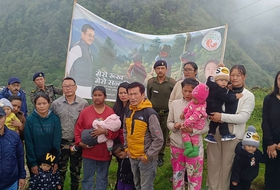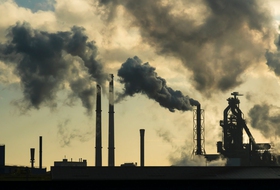
Several hundreds of women in India have rejuvenated vast stretch of forest land through a unique method of guarding the forest.
A Swedish study determines how much money can be saved by buying and selling secondhand objects in some online platforms. While it’s obvious that secondhand trade is good to save money and for the environment, environmental savings have not been assessed yet.
Online ads and the creation of platforms for buying and selling reused things have boosted this trade all over the world.
It’s about saving. Not just saving money. The environmental benefit of this global phenomenon is the subject of a study entitled Second Hand Effect conducted by the Swedish Environmental Research Institute (IVL) and commissioned by the Schibsted Media Group, a Norwegian multinational company of online buying and selling platforms.
The study used data from the 2015 buying and selling activities of five of the Schibsted Media Group’s major marketplaces: Subito (Italy), Vibbo (Spain), Leboncoin (France), Blocket (Sweden) and Finn (Norway). According to researchers, the users who bought second-hand objects – from furnishings to cars – contributed to save 12.5 million tonnes of CO2 in one year, because they didn’t buy new goods and didn’t take the old ones to the dump.
This amount of greenhouse gas is the equivalent of flying an Airbus 380 around the globe 1,100 times.
Italians have contributed to this result on the platform Subito.it saving 3.4 million tonnes of CO2, the equivalent of the emissions saved in 32 months of traffic block in Milan or 10 months in Rome, the annual emissions of 373,626 Italians, 3.6 million flights from Milan to New York, the production of 5.2 billion tonnes of pasta.
The largest amount of saved greenhouse gas emissions was that resulting from the buying and selling of second-hand vehicles (10 million tonnes of CO2 in the 5 countries).
Following are the goods of the home and people (2.1 million tonnes), electornics (650,000 tonnes) and sports and hobbies categories (170,000 tonnes).
Researchers at the IVL analysed random sample tests on published ads in the above mentioned websites. For every category of objects the products’ average material partition was calculated: for example, an average product in the “sofas and chairs” category consists of 30% wood, 11% steel, 18% polypropylene, 20% polyurethane, 10% polyester, 7% cotton, 3% leather and, 1% wool.
What’s the amount of CO2 generated by a smartphone
Researchers then calculated the environmental impact of the raw material extraction and production processes and of waste management.
For example, a new smartphone can generate about 75 Kg of CO2:
Producing and disposing of vehicles, smartphones, furnishings and everyday things has a cost in terms of raw materials and energy. That’s why buying and selling second-hand products can be a smart and sustainable alternative.
Siamo anche su WhatsApp. Segui il canale ufficiale LifeGate per restare aggiornata, aggiornato sulle ultime notizie e sulle nostre attività.
![]()
Quest'opera è distribuita con Licenza Creative Commons Attribuzione - Non commerciale - Non opere derivate 4.0 Internazionale.
Several hundreds of women in India have rejuvenated vast stretch of forest land through a unique method of guarding the forest.
The solution developed by the Italian startup Agri-E enables on-site bioethanol production, promoting energy self-sufficiency for farms.
South African court dismisses a major lawsuit by 140,000 Zambian women and children against Anglo American for Kabwe lead poisoning. A setback for affected communities enduring the lasting impact of lead contamination.
Controversial African land deals by Blue Carbon face skepticism regarding their environmental impact and doubts about the company’s track record, raising concerns about potential divergence from authentic environmental initiatives.
Majuli, the world’s largest river island in Assam State of India is quickly disappearing into the Brahmaputra river due to soil erosion.
Food imported into the EU aren’t subject to the same production standards as European food. The introduction of mirror clauses would ensure reciprocity while also encouraging the agroecological transition.
Sikkim is a hilly State in north-east India. Surrounded by villages that attracts outsiders thanks to its soothing calmness and natural beauty.
Sikkim, one of the smallest states in India has made it mandatory for new mothers to plant saplings and protect them like their children to save environment
Chilekwa Mumba is a Zambian is an environmental activist and community organizer. He is known for having organized a successful lawsuit against UK-based mining companies.







